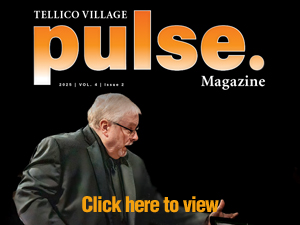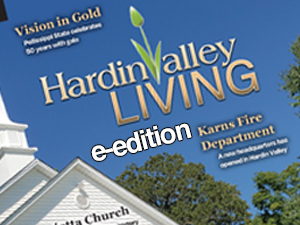‘Payload Party’ celebrates scientific success
“The wind was really squirrely that morning.”
The crazy wind was just the beginning of a weather balloon adventure for computer science teacher Sherilyn Dawson and six of her students in May.
On July 24, about 50 Concord Christian School students, parents and faculty gathered for a “Payload Party” to celebrate the successful build, launch and recovery of their payloads — styrofoam boxes outfitted to record temperatures and video the journey of a high-altitude balloon.
Last spring Dawson and her students were invited by Pellissippi State Community College to participate in a NASA-funded eclipse ballooning program through the space grant consortium — which also included Maryville College.
But the story doesn’t end there: round two is coming up in August, when the group travels to Clinton, South Carolina, to send up another experimental balloon.
“The purpose of the high-altitude balloon experiment was to have practice runs before the total eclipse on Aug. 21,” Dawson said.
“I had gone to Pellissippi in April to get help with our 3-D printer.” she recalled. “Lynn Klett asked me if I had any high school students who’d be interested in participating in the Total Eclipse Launch. I said, ‘Absolutely,’ as my daughter, Elizabeth, was a sophomore in high school.”
She recruited interested high school students, but also found that elementary and middle school students wanted to participate in a workshop led by Robert Lowe of Maryville College.
“I thought the high schoolers would be the builders; middle schoolers would be assistants and the elementary school students would be observers,” she said. “When it came down to it, all three age groups worked so well together. We were originally approved for one payload, but we ended up building four. Twenty-three students participated in the workshop and six went with us to the launch.”
That bright morning in May, the PSCC-Maryville College-CCS and Boy Scout team met at their PSCC “war room” to determine where the wind was blowing and the best location for the launch: Sunbright it was.
Each group had responsibilities at the launch site: some worked to ready the payloads, others connected the payloads together at the corners to attach to the high-altitude balloon, while others prepared the HAB to be filled with helium.
A fifth-grader, Jacob Sutton, with the balloon’s string tied to his wrist, was seated on the ground.
“He managed to hold on to the fill tube and serve as the ballast for biodegradable latex weather balloon to be filled,” Dawson said.
On a blue tarp work surface, payloads with a low-cost computer Raspberry Pi2 were lined up with a transmitter box with a GPS locater and tracking devices — an iridium satellite and a Spot satellite.
The CCS payloads, like the others, contained iPhones to record the experience, a webcam donated by Office Max in Turkey Creek and Pi cameras to video all the angles.
In addition, three of their payloads had a special “driver” attached to the outside: a small stuffed lion, the CCS mascot.
“When the balloon disappeared, we pulled up apps on our cell phones to track its location, loaded into the vans,” Dawson said. “After about an hour, we think the balloon expanded to about 30 feet in diameter before it burst at 85,000 feet.”
Back at PSCC, the group pulled up the Spot tracker satellite on a computer. Multiple pings indicated the balloon had settled in one location in Clark Center Park in Oak Ridge.
The balloon traveled for about two hours before having a controlled landing (since a parachute was attached) 120 feet up in a tree.
With help from CCS parents Ryan Shannon and Barnhart Crane and Rigging in Solway, the three lions and all the payloads were eventually retrieved.
Dawson has been obsessed with computers and science since middle school and brings her passion into the classroom.
“We have a very successful robotics team at CCS lead by Gina Flynn and Amanda Lane,” she said. “I want to teach the kids how to build a robotic arm.”
Learning to operate a commercial-grade robotic arm it is next on her to-do list. She’s humble about her efforts, though, and always turns the conversation back to her students.
“This may spark an interest for the next astronaut or the next researcher,” she said about the weather balloon activity.
“Participating in this gave me an opportunity to talk to real scientists from Pellissippi State,” said CCS student Nathan Armour, “and now I’d like to explore careers in the space industry.”
“We get to help the scientists with another experiment during the eclipse,” said his brother, Jacob Armour, also a CCS student. “That’s a once-in-a-lifetime thing.”
“Our students wouldn’t have had an opportunity like this if it wasn’t for CCS and their dedicated teachers,” said their mother, Kim Armour.
“We are one of 28 other teams across the country that will send a microbial sample up during the eclipse,” Dawson said. “Sarah Graham with Pellissippi State will lead the workshops in preparation for the August launch. The eclipse will only be two to four minutes
“In South Carolina, we will send up payloads with bacteria aboard that was isolated from U.S. spacecraft assembly clean rooms. It will help NASA understand microbial life on Mars or other extraordinary environments,” she added. “These small metal cards are harmless, yet environmentally resilient bacteria are dried on the surface. One card will be sent up in the payload, while another will remain on the ground for comparison later.
“I try to bring STEM-related activities to my classroom.”
Dawson has succeeded. In addition to the HAB, last fall her third- through fifth-graders built a 3-D printer from a kit and are working to create a prosthetic hand for a classmate.


